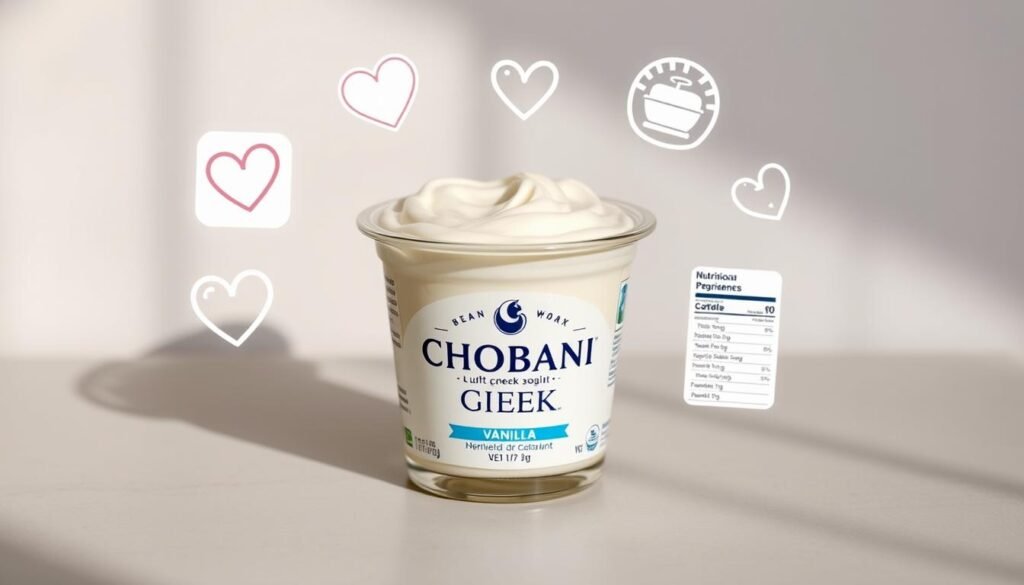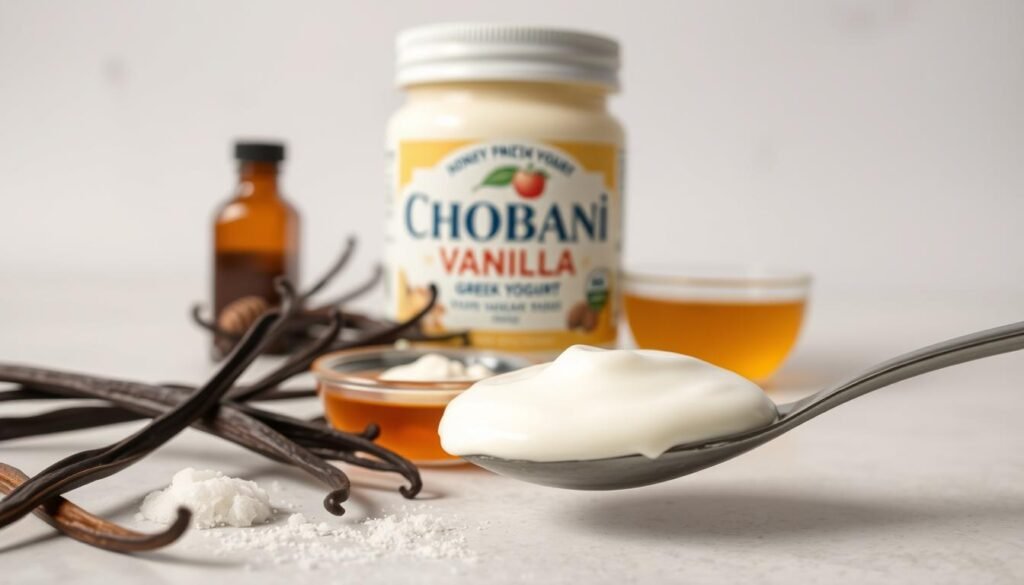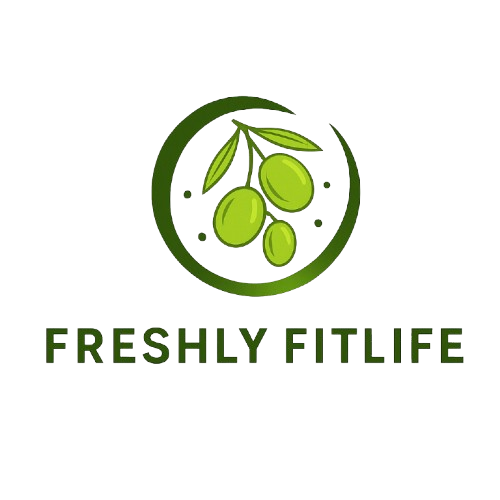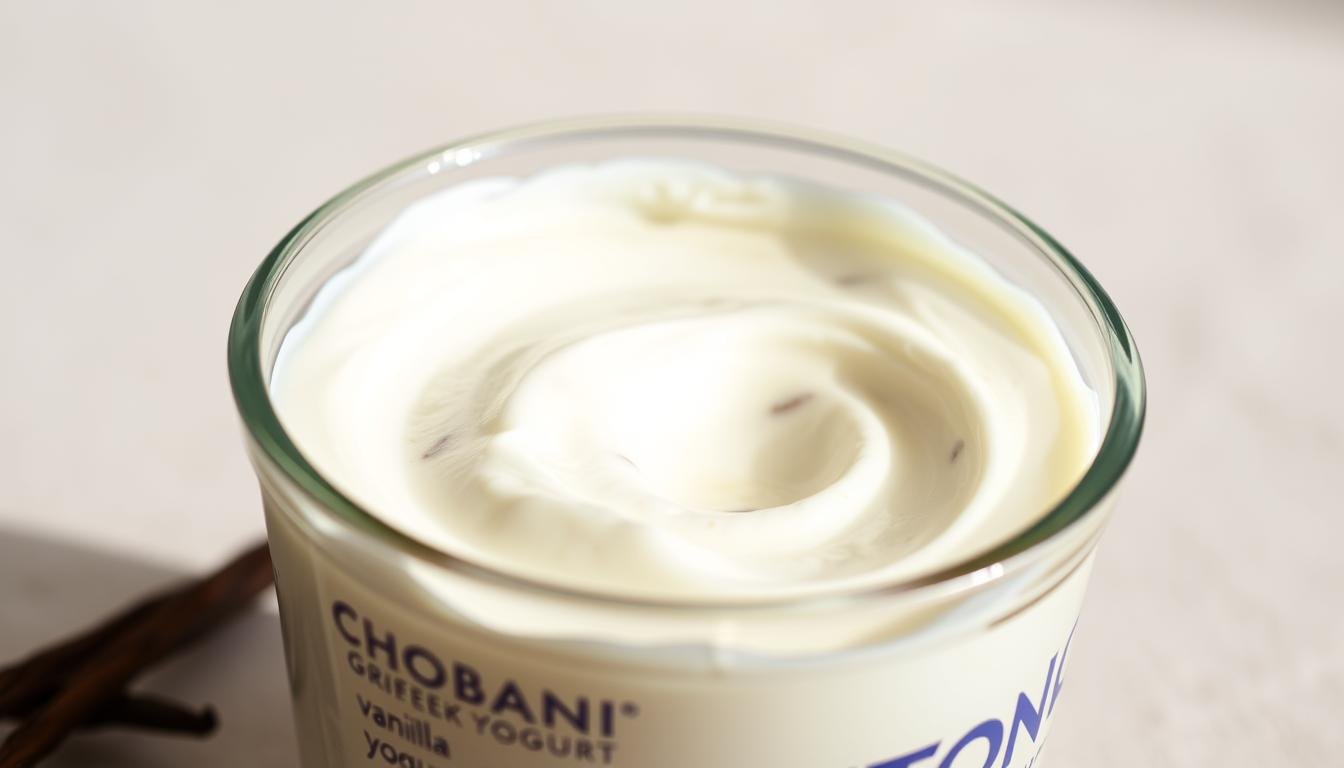Many people grab flavored yogurt for a quick, nutritious snack. But does this popular brand live up to its health claims? With 4 teaspoons of added sugar per serving and non-organic ingredients, it’s worth taking a closer look.
Greek yogurt has earned a reputation as a protein-packed superfood. Yet, flavored versions like Chobani’s vanilla blend often hide extra sweeteners. The Environmental Working Group (EWG) highlights concerns about processed additives and high sugar content.
So, can you enjoy this creamy treat without guilt? This article breaks down the facts—weighing the nutritional perks against potential downsides. From protein content to hidden sugars, let’s uncover the truth.
Key Takeaways
- Chobani’s vanilla-flavored option contains 4 tsp of added sugar per serving.
- Non-organic ingredients and “natural flavors” raise processing concerns.
- High protein content supports muscle health and keeps you full longer.
- Live cultures aid digestion, but sugar levels may offset benefits.
- For a deeper dive, check out this detailed nutrition analysis.
Introduction: Evaluating Chobani Vanilla Greek Yogurt
Nutrition-conscious shoppers often debate the merits of sweetened dairy products. Greek yogurt stands out for its high protein and gut-friendly probiotics. Compared to regular yogurt, it packs nearly double the protein—12–14g per cup—along with live cultures for digestion.

Chobani leads the market, known for creamy textures and bold flavors. Their vanilla variant ranks among the top sellers, blending sweetness with convenience. Yet, the added sugar (4 tsp per serving) creates a nutritional paradox: benefits like calcium and Vitamin D3 clash with excess sweetness.
To assess this product, focus on three factors:
- Macronutrient balance (protein vs. sugar)
- Quality of ingredients (e.g., natural flavors vs. additives)
- Certifications (Non-GMO but not organic)
| Feature | Greek Yogurt | Regular Yogurt |
|---|---|---|
| Protein per cup | 12–14g | 5–7g |
| Sugar (flavored) | 15–20g | 10–25g |
| Probiotics | Yes | Yes |
While Chobani avoids GMOs, the lack of organic certification may concern some diet purists. Weighing these factors helps determine if it fits your health goals.
Nutritional Breakdown of Chobani Vanilla Greek Yogurt
Understanding the nutritional profile helps decide if this creamy snack fits your diet. A 5.3oz serving packs 120–140 calories, with macros split into 12–14g protein, 15–20g carbs, and 0g fat.

Calories and Macronutrients per Serving
The table below compares key nutrients to daily values:
| Nutrient | Amount per Serving | % Daily Value |
|---|---|---|
| Protein | 12–14g | 24–28% |
| Total Sugars | 15–20g | N/A |
| Calcium | 15–20% DV | 15–20% |
| Vitamin D | 10% DV | 10% |
Protein Content: A High-Protein Snack?
With 12–14g per serving, this protein powerhouse rivals two eggs. It supports muscle repair and keeps hunger at bay. For context, the FDA recommends 50g daily for adults.
“Flavored yogurts often undermine their protein benefits with excessive sweeteners.” — Environmental Working Group
Sugar Levels: Natural vs. Added Sugars
Total sugars (15–20g) include lactose (natural milk sugar) and 10–12g added sugar from cane sugar. That’s 4 teaspoons—half the FDA’s daily limit for women.
Here’s the split:
- Natural sugars: 5–8g (lactose)
- Added sugars: 10–12g (cane sugar)
Key Ingredients in Chobani Vanilla Greek Yogurt
What goes into your favorite flavored dairy snack? The label lists five main ingredients: cultured nonfat milk, cane sugar, pectin, locust bean gum, and natural flavors. Each plays a role in taste, texture, and nutrition.

Cultured Nonfat Milk and Live Active Cultures
Nonfat milk forms the base, fermented with live cultures like L. bulgaricus and S. thermophilus. These probiotics aid digestion and boost gut health. The culturing process also thickens the texture naturally.
Cane Sugar and Natural Flavors
A 5.3oz serving includes 10–12g of cane sugar—about 4 teaspoons. The FDA defines natural flavors as extracts from plant or animal sources. Here, they enhance the vanilla flavor without artificial additives.
Thickeners: Pectin and Locust Bean Gum
Pectin (from fruit) and locust bean gum (from carob seeds) stabilize the creamy consistency. Both are plant-based and widely used in dairy products. Unlike artificial thickeners, they’re minimally processed.
| Ingredient | Source | Function |
|---|---|---|
| Cultured nonfat milk | Dairy | Base, protein, probiotics |
| Cane sugar | Sugarcane | Sweetness |
| Pectin | Fruit | Thickener |
| Locust bean gum | Carob tree | Stabilizer |
No artificial sweeteners or preservatives appear in the mix. For those watching additives, this transparency matters.
Health Benefits of Chobani Vanilla Greek Yogurt
Flavored dairy snacks can offer more than just taste—some pack serious nutritional perks. This option delivers probiotics, calcium, and protein, making it a versatile addition to your diet.
Gut Health: Probiotics and Digestive Benefits
Live active cultures like L. bulgaricus support digestion. Compared to other fermented foods, this snack provides a similar probiotic punch:
| Source | Probiotic Strains | CFU per Serving |
|---|---|---|
| Yogurt | 2–4 strains | 1–10 billion |
| Sauerkraut | 3+ strains | 100 million–1 billion |
These probiotics may reduce bloating and improve gut balance.
Bone Strength: Calcium and Vitamin D3
One serving offers 15–20% of your daily calcium needs. Paired with Vitamin D3, it enhances absorption better than supplements. Studies show dairy-based calcium strengthens bones more effectively.
Satiety and Weight Management
With 12–14g protein per serving, it curbs hunger longer than carb-heavy snacks. Research links high-protein dairy to reduced calorie intake later in the day.
“Dairy protein triggers satiety hormones, helping control portions.” —
Potential Drawbacks to Consider
While flavored dairy snacks offer benefits, some aspects may give pause. Before adding this product to your routine, weigh these factors carefully.
Added Sugar Concerns
The American Heart Association recommends no more than 6 teaspoons of added sugar daily for women. A single serving contains nearly 4 teaspoons—two-thirds of that limit.
Here’s how it compares to other sweetened dairy options:
| Product | Added Sugar per Serving |
|---|---|
| Flavored Yogurt | 10–12g |
| Chocolate Milk | 12–15g |
| Ice Cream | 14–20g |
“Regularly exceeding sugar limits may increase diabetes risk over time.”
Lactose Intolerance and Dairy Sensitivities
Each serving contains about 5–8g of lactose. For those with sensitivities, this may cause bloating or discomfort. Lactose-free alternatives exist for easier digestion.
Common symptoms include:
- Gas and bloating
- Stomach cramps
- Diarrhea after consumption
Processing and Additives
While free from artificial preservatives, some question the “natural flavors” label. The Environmental Working Group notes moderate processing concerns with certain ingredients.
A recent lawsuit raised questions about potential chemical leaching from packaging. Non-organic dairy production also carries environmental impacts.
For those avoiding additives, plain varieties with fresh fruit offer cleaner alternatives.
How Does Chobani Compare to Other Greek Yogurts?
Not all flavored dairy snacks are created equal—some pack more nutrition than others. Brands like Siggi’s and Fage offer lower-sugar alternatives, while Oikos leans sweeter. Here’s how popular products stack up.
Nutritional Comparison with Plain and Flavored Varieties
Plain greek yogurt wins for purity, but flavored versions add convenience. A 5.3oz serving comparison:
| Brand | Protein (g) | Added Sugar (g) |
|---|---|---|
| Chobani Vanilla | 12–14 | 10–12 |
| Siggi’s Vanilla | 15 | 4 |
| Fage Total 2% | 18 | 0 |
“Low-sugar options like Siggi’s use stevia or fruit for sweetness, cutting added sugars by 60%.”
Brand Alternatives: Sugar and Ingredient Differences
Texture and ingredients vary:
- Thickeners: Pectin (Chobani) vs. tapioca (Oikos) vs. corn starch (store brands)
- Organic: Stonyfield and Wallaby use USDA-certified milk
- Cost: Chobani averages $1.25/5.3oz vs. Siggi’s at $1.80
Consumer surveys rank Chobani highest for creaminess, but Siggi’s wins among health-focused buyers. For balanced flavors, try mixing plain varieties with fresh fruit.
Is Chobani Vanilla Greek Yogurt Good for Weight Loss?
Balancing flavor and nutrition can be tricky when choosing snacks for weight management. This creamy option offers 12–14g of protein per serving, but its sugar content raises questions. Let’s break down its role in a diet plan.
Protein’s Role in Curbing Hunger
High-protein foods like this snack trigger satiety hormones, reducing cravings. Compared to fats or carbs, protein has a higher thermic effect—burning more calories during digestion.
A 5.3oz cup provides 24–28% of daily protein needs. Studies show it keeps you full 30% longer than carb-heavy snacks.
| Snack | Protein (g) | Satiety Score* |
|---|---|---|
| Greek Yogurt | 12–14 | 85/100 |
| Protein Bar | 10–12 | 75/100 |
| Almonds | 6 | 65/100 |
Calorie Control and Portion Sizes
At 120–140 calories per cup, it fits a balanced diet. Pre-portioned packaging prevents overeating—a common pitfall with bulk snacks.
For weight loss, pair it with fiber-rich toppings like berries. This combo slows sugar absorption, stabilizing energy levels.
“Portion-controlled snacks reduce mindless eating by 20%.”
While not a meal replacement, its macros support health goals when consumed mindfully. Opt for plain varieties if sugar is a concern.
Dietary Suitability: Who Should Eat It?
Choosing the right snack depends on your lifestyle and dietary needs. This creamy option suits some plans better than others. Let’s explore where it fits—and where it might not.
For Fitness Enthusiasts and Active Lifestyles
Post-workout recovery demands protein and quick nutrients. With 12–14g of protein per serving, it helps repair muscles efficiently. The IIFYM (If It Fits Your Macros) approach welcomes it as a flexible option.
Pair it with a banana or almonds for balanced energy. Athletes often prefer it over processed bars for its natural ingredients.
Limitations for Low-Sugar or Keto Diets
Keto followers need to watch carbs closely. At 15–20g total sugar per serving, this snack exceeds typical keto limits (5–10g daily). Paleo diet adherents may also skip it due to dairy restrictions.
For diabetes management, opt for plain versions and add berries. Vegetarians and gluten-free eaters, though, can enjoy it safely.
| Diet | Compatibility | Adjustment |
|---|---|---|
| Keto | Limited | Choose unsweetened |
| Paleo | No | Dairy-free alternatives |
| IIFYM | Yes | Track macros |
“Flavored yogurts often clash with low-carb goals—read labels carefully.”
Serving Suggestions and Healthy Pairings
Boost your snack game with creative, nutrient-packed combinations. Pairing this creamy base with fiber-rich fruits or protein-heavy nuts balances taste and nutrition. Below, explore ways to enhance flavor without spiking calorie counts.
With Fresh Fruits and Nuts
Add sliced berries or bananas for natural sweetness. The fiber slows sugar absorption, stabilizing energy levels. Almonds or walnuts introduce crunch and healthy fats.
Try these winning duos:
- Blueberries + chia seeds: Antioxidants and omega-3s.
- Apple slices + cinnamon: Low-glycemic and warming.
- Pomegranate + pistachios: Tartness meets earthy crunch.
| Topping | Nutrition Boost |
|---|---|
| Strawberries | Vitamin C + fiber |
| Walnuts | Omega-3s + protein |
| Kiwi | Digestive enzymes |
In Smoothies or Overnight Oats
Blend with spinach and frozen mango for a vibrant smoothie. The probiotics survive gentle mixing, aiding gut health. For foods like overnight oats, layer with granola and flaxseeds.
“Combining dairy with fiber-rich toppings maximizes nutrient absorption.”
Kid-friendly ideas:
- Parfaits: Alternate with granola and honey.
- Frozen pops: Mix with pureed peaches.
- Dessert swaps: Top with dark chocolate shavings.
Understanding the Label: Certifications and Claims
Decoding food labels requires understanding certifications beyond marketing claims. The product‘s packaging reveals important details about farming practices and quality standards through verification badges.
Non-GMO and No Artificial Flavors
Chobani carries Non-GMO Project verification, meaning its ingredients undergo rigorous testing. The process examines:
- Seed sourcing documentation
- Supply chain segregation protocols
- Annual facility audits for cross-contamination risks
This differs from organic standards, as shown below:
| Standard | Non-GMO | USDA Organic |
|---|---|---|
| GMO testing | Required | Implied by protocol |
| Pesticide use | Not restricted | Prohibits synthetics |
| Animal welfare | No requirements | Pasture access mandated |
The “no artificial flavors” claim means all flavorings derive from plant or animal source materials. However, the term “natural flavors” remains broadly defined by FDA standards.
Absence of Organic Certification
While using nonfat milk from non-GMO cows, the product lacks USDA organic certification. This means:
- Feed may contain conventional pesticides
- No third-party verification of pasture time
- Higher environmental impact from conventional dairy farming
The Environmental Working Group notes this creates a 30% larger carbon footprint versus organic counterparts. For clean-label seekers, this distinction matters when choosing between certification priorities.
Expert Opinions on Chobani Vanilla Greek Yogurt
Registered dietitians share insights on managing sugar in popular snacks. While the nutrition profile offers benefits, professionals emphasize mindful consumption. Their guidance helps balance taste with health goals across age groups.
Nutritionists’ Take on Sugar Content
The Academy of Nutrition and Dietetics (AND) notes flavored varieties often exceed ideal sweetness thresholds. Their 2023 position paper suggests:
- Limit added sugar to ≤10% of daily calories
- Pair with fiber to slow absorption
- Monitor portion sizes carefully
Comparative sugar content in common snacks:
| Snack | Sugar (g) | % Daily Value |
|---|---|---|
| Flavored Yogurt | 15-20 | 30-40% |
| Granola Bar | 8-12 | 16-24% |
| Apple | 19 (natural) | 0% added |
“The nutrients outweigh concerns if consumed occasionally—not daily.”
Dietitian Recommendations for Balanced Consumption
Specialists tailor advice by demographic needs:
Pediatrics: The AAP suggests half-servings for children under 12. Combine with whole grains to offset blood sugar spikes.
Athletes: Sports diet experts recommend post-workout pairing with whey protein. The lactose aids glycogen replenishment.
Seniors: Geriatric nutritionists highlight calcium benefits for bone health. Those with diabetes should opt for plain versions.
Functional medicine practitioners advise:
- Consume before noon for optimal metabolism
- Add cinnamon to stabilize glucose response
- Rotate with other probiotic foods like kefir
Consumer Reviews and Common Feedback
Customer experiences reveal key insights about this popular dairy snack. Across platforms like Amazon and retail sites, the product earns praise for its creamy consistency and balanced flavor profile. Yet, health-focused shoppers highlight trade-offs between convenience and nutrition.
Taste and Texture Preferences
Reviews consistently applaud the velvety texture, comparing it favorably to competitors. A Curex analysis notes:
- Plain variety: Tartness complements the creaminess.
- Fruit flavors: Blueberry and strawberry rank highest for natural taste.
- Vanilla: Sweetness is present but not overwhelming.
Some buyers mention pairing it with fresh fruits or granola for added crunch. The single-serve cup format earns points for portion control and convenience.
Health-Conscious Buyers’ Perspectives
While the product contains live cultures and hormone-free milk, sugar content divides opinions. One reviewer noted it’s “a treat, not a staple” for clean-eating routines. Key takeaways:
“The probiotic benefits are real, but I opt for plain versions to avoid added sugars.”
Price sensitivity surfaces in feedback too. At ~$1.25 per cup, some shoppers rotate it with cheaper plain alternatives.
Conclusion: Is Chobani Vanilla Greek Yogurt Healthy?
Balancing taste and nutrition requires careful snack choices. This product delivers 12–14g of protein and gut-friendly probiotics per serving, supporting muscle and digestive health.
Yet, its 4 teaspoons of added sugar per cup may offset benefits for some. The Environmental Working Group suggests moderation, especially for kids or sugar-sensitive diet plans.
Ideal for active lifestyles, it pairs well with berries or nuts to slow sugar absorption. For stricter regimens, plain varieties or lower-sugar brands like Siggi’s work better.
Check ingredients if avoiding additives. Enjoy occasionally as part of a varied diet—not a daily staple.




